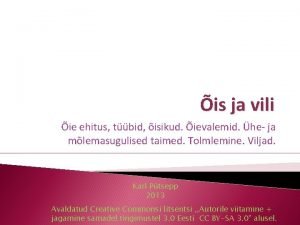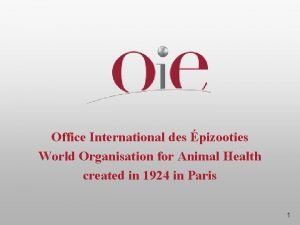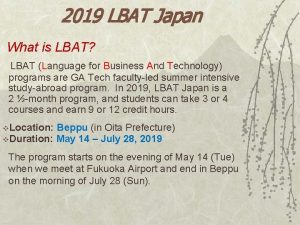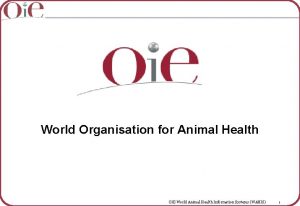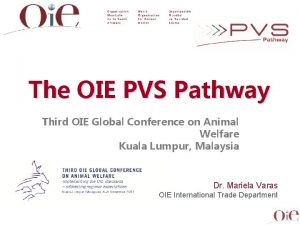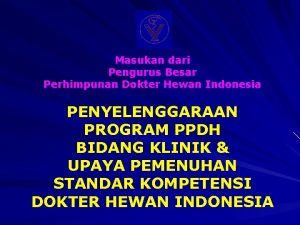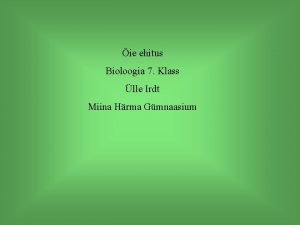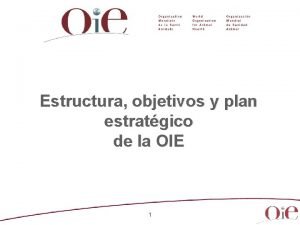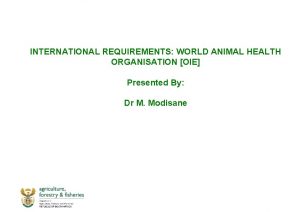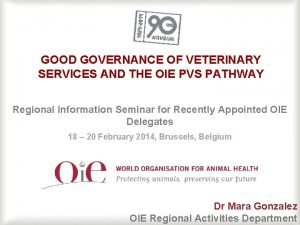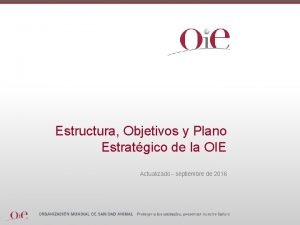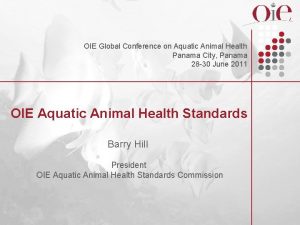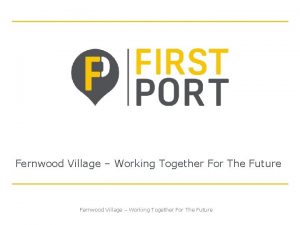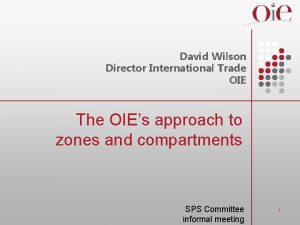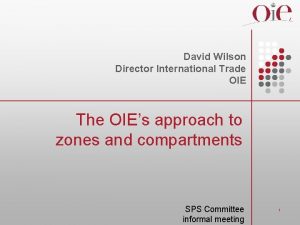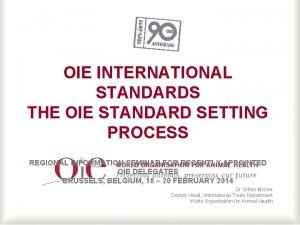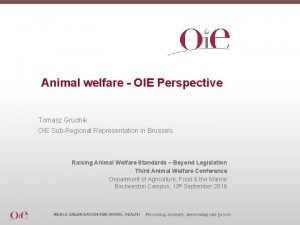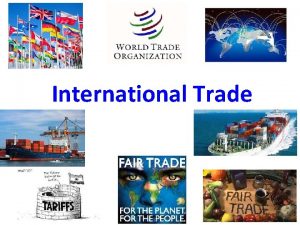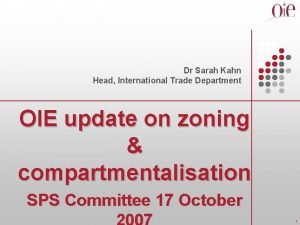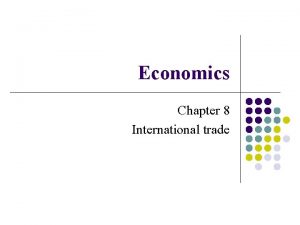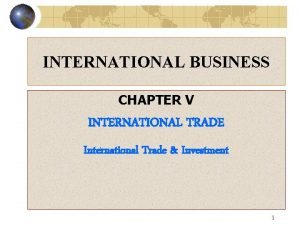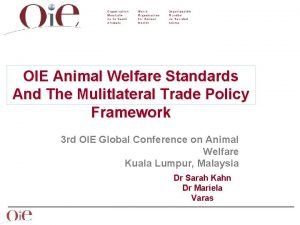David Wilson Director International Trade OIE The OIEs

















- Slides: 17

David Wilson Director International Trade OIE The OIE’s approach to zones and compartments SPS Committee informal meeting 1

zoning/compartmentalisation ‘zoning’ and ‘regionalisation’ have the same meaning – ‘zoning’ is now used in the Codes · zoning and compartmentalisation are procedures implemented by a country · · to define sub-populations of different animal health status within its territory · in accordance with the recommendations in the OIE Codes · for the purpose of international trade 2

zoning/compartmentalisation · zoning/compartmentalisation allows a concentration of resources where there is greatest chance of success · in controlling or eradicating a disease · gaining or maintaining market access for certain commodities · where freedom of the whole country from the disease is not possible or practicable 3

zoning/compartmentalisation zoning applies to an animal sub-population defined on a geographical basis · compartmentalisation applies to an animal subpopulation defined by management practices relating to biosecurity · 4

OIE definitions · Zone/Region · a clearly defined part of a country … · Compartment · one or more establishments (premises in which animals are kept) under a clearly defined common biosecurity management system … 5

OIE definitions … containing an animal sub-population with a distinct health status with respect to a specific disease or diseases for which required surveillance, control and biosecurity measures have been applied for the purpose of international trade 6

application of the concepts the extent of a zone is established on the basis of natural, artificial or legal boundaries · the requirements for a compartment are established on the basis of management practices relating to biosecurity · by the Veterinary Administration 7

zone major road BUF F ZON ER E FREE ZONE INFECTED ZONE railway river FER F U B E ZON FREE ZONE 8

Compartment Equipment t m p i u Eq r Bi ds nt e m quip E s t en pm ui rd Bi Eq d Fee GROWING FLOCK Feed en FEED SUPPLY Equipment BREEDING FLOCK ds Bir uip Eq nt me SLAUGHTER HOUSE Birds GROWING FLOCK Equipment 9

recommendations zoning or compartmentalisation not mandatory · Code recommendations exist or will be developed for zones and compartments for diseases for which the concepts are appropriate · · for some diseases, either concept may not be appropriate 10

application depends on · · · epidemiology of the disease environmental factors necessary surveillance appropriate and applicable biosecurity measures quality of vet services / other competent authority cooperation between govt and private sector for compartments 11

some factors · epidemiology · how does the disease spread ? · what species does it affect ? · environment · temperature / humidity · natural / artificial barriers · biosecurity measures · dedicated staff and equipment · animals housed vs free range · imposed movement controls 12

application of the concepts · Veterinary Administration must document the measures taken to · identify the animal sub-population · recognise its distinct health status · maintain its distinct health status dossier will be as detailed as situation requires · compartmentalisation requires good cooperation and trust between private sector and govt · · · developed by private sector initial determination and regular audits by govt official international negotiations by govt credibility 13

application of the concepts · exporting country wanting to define a zone or compartment within its territory needs to implement the Code recommendations for setting up and maintaining such a zone or compartment · or equivalent measures · within the context of · competent vet services · sound knowledge of the animal population · ability to survey for and diagnose disease accurately 14

application of the concepts · an importing country should recognise this zone or compartment, subject to the application of the appropriate Code recommendations · with regard to the importation, or transit through its territory, of commodities from that zone or compartment 15

Uses · in disease control / eradication campaign · progressive zoning/compartmentalisation allows stepwise approach · allows concentration of resources where greatest chance of success · in trade zone · to gain / maintain market access for certain commodities · where whole country freedom not possible or practicable 16

World organisation for animal health 12 rue de Prony 75017 Paris, France Tel: 33 (0)1 44 15 18 88 Fax: 33 (0)1 42 67 09 87 Email: oie@oie. int http: //www. oie. int 17
 Tuultolmlejad
Tuultolmlejad Oie office international des epizooties
Oie office international des epizooties David warren director
David warren director Oie gatech
Oie gatech Terrestrial animals
Terrestrial animals Oie pvs tool
Oie pvs tool Oie delegates
Oie delegates 33 profesi dokter hewan menurut oie
33 profesi dokter hewan menurut oie Isasõis
Isasõis Nombres de las banderas en ingles
Nombres de las banderas en ingles Oie
Oie Oie
Oie Oie
Oie Objetivos de la oie
Objetivos de la oie Oie aquatic manual
Oie aquatic manual Ypo firstport
Ypo firstport Trade diversion and trade creation
Trade diversion and trade creation Trade diversion and trade creation
Trade diversion and trade creation
